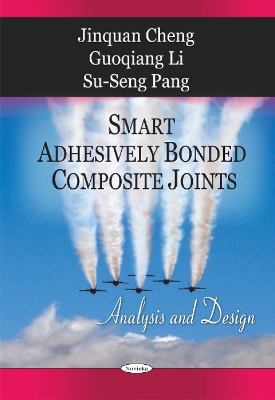Due to their inherent advantages over mechanical-fastening methods, the use of adhesively bonded composite joints has been significantly increased in recent years for joining composite beams, panels, tubes, etc., which are fundamental components in civilian, military and aeronautic structures. Because the applied load in the adherends is always transferred in the form of shear and/or peel stresses through the adhesive layer, the stress concentration developed in the end regions at the adhesive bondline is the principal reason for causing the premature and catastrophic failure of adhesively bonded joints. This has always been a dilemma for the designers of such joints. In order to reduce the peel/shear stresses concentration and improve the joint strength, some traditional mechanical methods have been developed as practical solutions to reduce the stress concentration, such as rounding off sharp edges, spewing fillets, and tapering adherends. These methods are passive in reducing stress concentration, i.e., they are ineffective unless the pattern and magnitude of the applied loads are fixed. Comparing to these traditional mechanical enhancement methods, an active smart strength improvement method for adhesively bonded composite joint is introduced in this book to adaptively realise the reduction of peel/shear stress concentration through the integrated piezoelectric layers as sensor/actuator in the composite joint system. This type of joint is smart because, on one hand, the integrated piezoelectric layers can serve as sensors to monitor the joint system deformation; on the other hand, the piezoelectric layers also serve as actuators to produce a counter-balancing force or moment. In such smart joints, counter-balancing forces and moments can be adaptively produced by adjusting the applied electric fields to the integrated piezoelectric layers based on the information as sensors. The additional forces and moments can be controlled to act oppositely to those developed internally by the payloads, thereby alleviating the stress concentration in the joint edges and smartly improve the joint strength. In this book, the fundamental concept of the proposed smart adhesively bonded composite joint method is firstly introduced, and then, the details in designing and analysing such joints under various loading conditions are systematically discussed, including single-lap and single-strap smart composite joints subjected to tensile loading, and smart composite pipe joints subjected to axial tension or bending.
- ISBN10 1607411288
- ISBN13 9781607411284
- Publish Date 7 January 2009
- Publish Status Unknown
- Publish Country US
- Imprint Nova Science Publishers Inc
- Format Paperback
- Pages 103
- Language English
